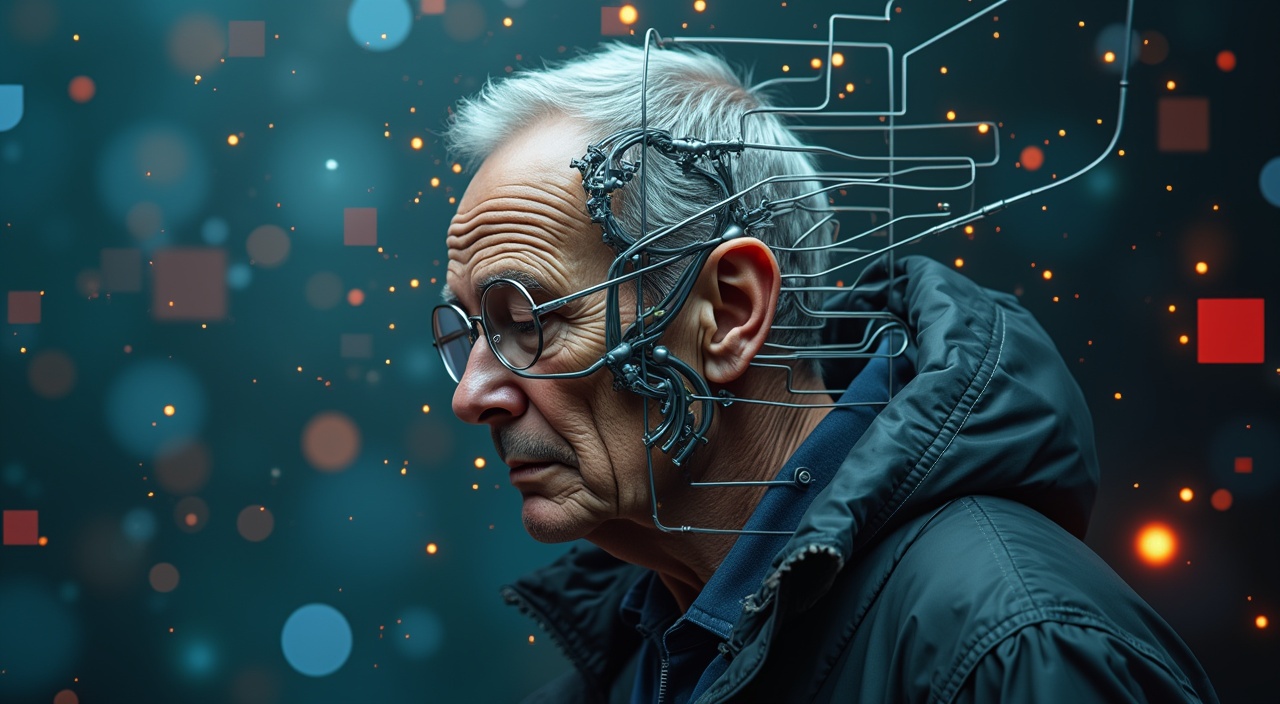Artificial Intelligence is creating a breakthrough in fighting elderly isolation, turning digital interactions into genuine connections that go beyond standard communication limits. Using cutting-edge technologies like AI chatbots and smart assistance systems, older adults now have access to exceptional levels of engagement, support, and companionship that help address the serious health issues caused by social isolation.
Key Takeaways:
- AI technologies provide personalized, 24/7 companionship that adapts to individual senior’s communication preferences and emotional needs
- Smart assistance systems offer critical health monitoring, medication management, and fall detection capabilities
- Chatbots can deliver cognitive stimulation, emotional support, and consistent interaction without human fatigue
- AI solutions potentially reduce healthcare costs by 20-30% through early health issue detection
- Digital companions create connection pathways for seniors with limited mobility or social networks
The Silent Epidemic: Understanding Elderly Loneliness
Loneliness isn’t just a feeling—it’s a health crisis hitting our elderly population hard. The numbers paint a sobering picture: 27% of older adults live alone, significantly increasing their isolation risk.
The Scope of Senior Isolation
The problem runs deeper than many realize. In New Jersey alone, 44% of seniors report feelings of loneliness—nearly half the elderly population feeling disconnected from others. Social isolation affects nearly 1 in 4 seniors nationwide, creating a silent health emergency that often goes unaddressed.
What’s particularly striking? This isn’t just an elderly issue. Millennials are 50% more likely to feel socially isolated than Baby Boomers, suggesting we’re facing a generational shift in how we connect with each other.
Who’s Most at Risk?
The isolation crisis doesn’t affect everyone equally. These factors increase vulnerability:
- Physical limitations that restrict mobility
- Living in rural areas with limited transportation
- Loss of spouse or longtime friends
- Limited technology skills to connect virtually
- Fixed incomes preventing social participation
The consequences go beyond emotional distress—persistent loneliness links to higher dementia risk, particularly in women, and accelerates cognitive decline.
I’ve seen how AI technologies can create communication bridges for isolated seniors, which I’ll explore in my article AI Revolution: Elderly Find New Hope Amid Isolation and Loneliness!

The Hidden Health Crisis Nobody’s Talking About
Loneliness isn’t just an emotional state—it’s a serious health hazard that’s particularly devastating for our elderly population. The consequences stretch far beyond feeling sad or disconnected.
Isolation’s Deadly Impact
When seniors live in isolation, their bodies and minds pay a heavy price. According to research, social isolation is as harmful as smoking 15 cigarettes daily—a shocking comparison that puts this crisis in perspective. The stats paint a grim picture:
- Isolated seniors face a 26% higher risk of all-cause mortality
- Women experiencing chronic loneliness have a 40% higher dementia risk
- Increased vulnerability to cardiovascular disease
- Accelerated cognitive decline
- Higher rates of premature death
How Isolation Harms the Body
The physiological mechanisms behind these statistics are revealing. When elderly individuals lack social connection, their bodies respond with increased inflammation and stress hormones. This creates a cascade of negative health effects.
The brain itself changes in response to isolation. Neural pathways associated with social connection weaken, while stress-response systems become chronically activated. This biological response explains why studies show such dramatic health impacts.
As one researcher at AARP’s Advocacy Group noted, “We’ve underestimated loneliness as a health risk factor for decades.” This silent epidemic demands attention, especially as our population continues to age.
The good news? AI technologies offer promising solutions that I’ll explore in the next section.

AI: The Compassionate Technology Reshaping Senior Living
Loneliness hits hard in our senior years. I’ve watched my own parents struggle with isolation as mobility decreased and friends passed away. This connection gap isn’t just emotionally painful—it’s physically dangerous. Studies from the National Institute on Aging link persistent loneliness to higher dementia risk, particularly in women.
Chatbots: The Always-Present Digital Companions
AI-powered chatbots have transformed from clunky text-based tools to genuine companions that can chat with seniors around the clock. These digital friends don’t need sleep, never lose patience, and can’t catch the flu.
Modern chatbots leverage natural language processing to create remarkably human-like conversations. They can:
- Remember personal details and preferences (like asking about a grandchild by name)
- Adapt tone and topics based on mood detection
- Provide cognitive stimulation through games and puzzles
- Offer emotional support during difficult moments
- Learn from interactions to become more personalized over time
The results speak for themselves. Woebot, an AI mental health chatbot, has shown promising results in reducing depression symptoms among older adults. One user told me, “It’s like having a friend who remembers everything about me, never judges, and is always happy to chat.”
The beauty of these AI companions lies in their adaptability. Unlike rigid programs of the past, today’s AI learns individual preferences, communication styles, and needs—creating a truly personalized experience that grows more effective over time. For many seniors, this adaptive technology brings a blend of independence and connection they’d otherwise miss.
Smart Assistance: More Than Just Conversation
AI goes beyond mere chatting for seniors—it tackles real daily challenges. I’ve seen how these tools transform lives by creating safety nets where human care gaps exist.
Health and Safety Support
Smart pill dispensers with AI integration now offer personalized medication schedules and reminders. This matters tremendously since nearly 90% of older adults take prescription medications, often juggling multiple pills daily.
Fall detection systems can now recognize unusual movements and alert caregivers immediately. Given that one in four older adults experiences annual falls, this technology literally saves lives.
Daily Living Enhancement
AI-powered assistance has evolved to handle:
- Voice-activated smart home controls for lighting, temperature, and security
- Automated grocery ordering and medication refill systems
- Virtual companions that adapt to personal preferences and routines
- Calendar management that sends appointment reminders to both seniors and caregivers
These systems work together—rather like a digital safety net with a personality!
The Future of Aging: A Technological Renaissance
AI is reshaping how our seniors age with dignity at home. Smart fall detection systems now monitor movements without intrusive cameras, alerting caregivers only when needed—a game-changing approach for independence.
Economic Transformation Through Technology
The financial impact can’t be ignored. AI systems catch health issues earlier, potentially slashing healthcare expenses by 20-30% for senior populations. Who wouldn’t want their parents receiving care that’s both better and less expensive?
Robots as Companions, Not Replacements
AI-powered robots aren’t taking jobs—they’re filling gaps where human caregivers simply don’t exist. These systems handle repetitive tasks while allowing human caregivers to focus on emotional connection.
The numbers tell a compelling story. With projections showing that 30% of the EU population will be 65+ by 2100, we face a choice: innovate with AI or watch care quality decline as resources stretch thinner.

Embracing a Connected Tomorrow
The perfect balance between human touch and AI support creates a golden opportunity for seniors. I’ve seen firsthand how technology can complement—not replace—family connections.
Technology as the Bridge, Not the Destination
AI companionship offers unique advantages that work alongside human relationships:
- Smart home systems that learn preferences while maintaining independence
- AI companions that provide conversation without judgment or time constraints
- Health monitoring that connects directly to family members and healthcare providers
- Virtual reality experiences that bring distant places to those with limited mobility
Ethical boundaries must be maintained. Privacy concerns, data protection, and ensuring AI doesn’t replace essential human interaction remain critical considerations.
The goal isn’t creating a tech-dependent generation of seniors but using AI to expand their world. When implemented thoughtfully, technology becomes the connector that brings families closer despite physical distance, as highlighted in research from CallRail’s recent survey of senior living facilities.
Sources:
• Downers Grove Health Care – Why Socialization is Crucial for Senior Health and Well-Being
• McKnight’s – Persistent Loneliness Linked to Higher Dementia Risk, Especially in Women
• Human Care NY – 52 Senior Health Statistics, Facts and Trends
• SJ Magazine – New Jersey’s Loneliness Epidemic
• Medical Xpress – AI-Driven Robotics Aims to Help Older Adults








